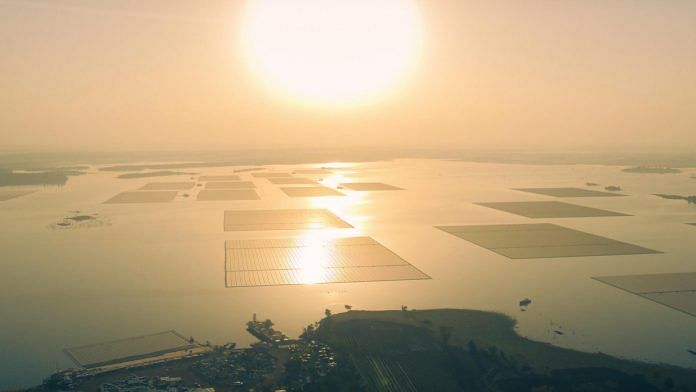Omkareshwar: As a crane lowers a 5-tonne cement block into Omkareshwar Dam from the black barge, Ajeet Yadav dives after it into the deep of the Narmada River in Madhya Pradesh’s Khandwa district. He quickly unhooks the block from the crane. After a few tense minutes, he resurfaces and everybody on the barge cheers. They are one step closer to completing what is touted to be the world’s largest floating solar energy project, expected to produce 600 megawatts of power.
Upon completion, the project will cover 6.6 square kilometres of water surface and generate over 40.50 lakh units of electricity.
“The floating solar plant will be sufficient to light over 90,000 homes or the entire city of Indore during the daytime,” said Gaurav Bari, an environmentalist and solar power specialist at Rewa Ultra Mega Solar Power Ltd, the state’s implementing agency. The first phase of the project—estimated to cost Rs 3,950 crore overall—will generate 340 megawatts of solar power. And Bari’s team is working overtime so that it’s operational by 1 April, before the Lok Sabha elections.
The Omkareshwar Dam solar project promises to put Madhya Pradesh on the global map as a serious player in the solar energy market. It aims to transform the temple town of Omkareshwar into a renewable energy hub. Already, factories manufacturing floaters for the panels have sprung up in Indore. India still derives around 57 per cent, or 237 GW, of its electricity from fossil fuels, largely through burning coal, the dirtiest of energy sources. The floating solar project will go a long way in helping the country achieve its renewable energy target of 500 GW installed capacity by 2030.
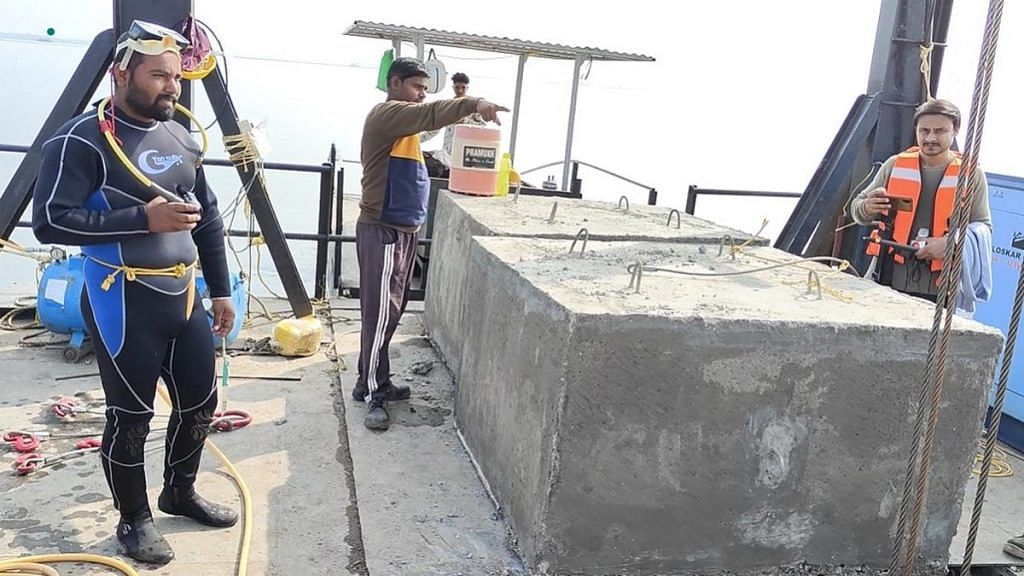
Clean energy, low use of land space, reduced evaporation, and cooler operating temperatures make floating solar plants an attractive alternative. Since India embraced the technology in 2015, as many as 10 floating solar plants have come up in Gujarat, Uttar Pradesh, Kerala, and Andhra Pradesh, with the largest being the 100MW Ramagundam project in Telangana. But none compare to the scale or ambition of what the Madhya Pradesh government is undertaking.
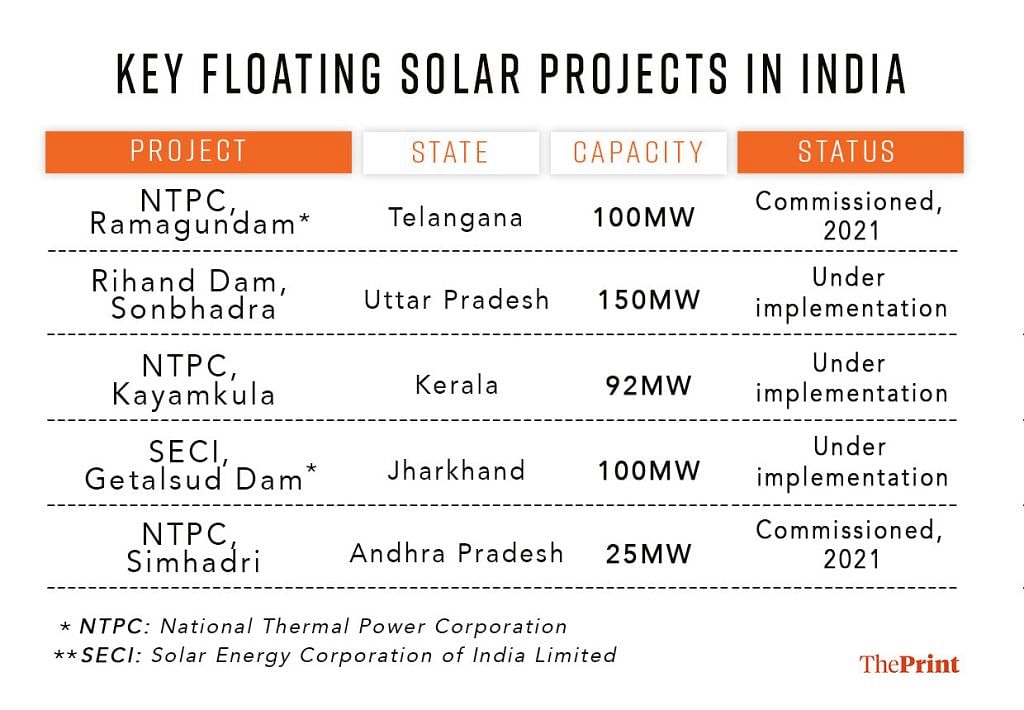
It has generated curiosity—and excitement—among scientists and engineers from top institutes like IIT-Bombay and Roorkee, as well as think tanks such as the Center for Study of Science, Technology and Policy (CSTEP). Ecologists, however, are concerned about how reduced sunlight due to the panels will affect marine life and water quality, and are setting up labs to study the long-term impact.
That said, floating solar photovoltaic (FSPV) technology, which allows solar panels to float on water instead of being mounted on the ground, has become a game changer, especially in Asia. Initially developed for research at the National Institute of Advanced Industrial Science and Technology in Aichi, Japan, it was first used for commercial purposes in California back in 2008.
Since then, many Asian countries, especially those where land is scarce, have taken to the technology like fish to water. China, Malaysia, Indonesia, Thailand and other countries have built FSPV plants on reservoirs, dams, industrial basins, water treatment plants, and even unused mining ponds.
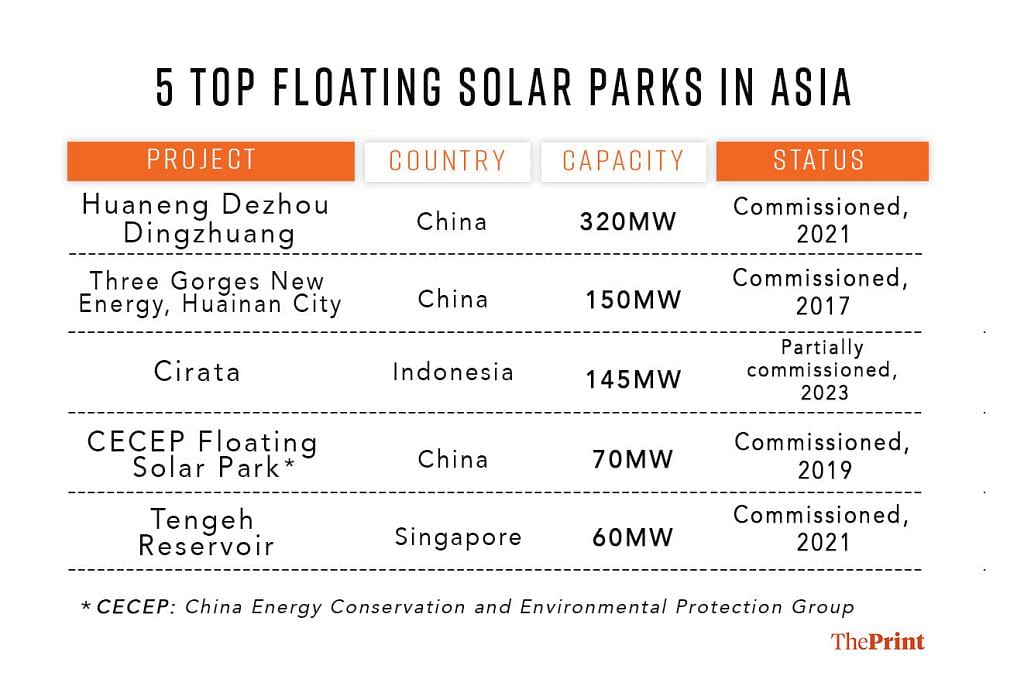
“There are three main pillars of solar generation—rooftop installations, ground-mounted parks, and floating solar parks, which is still an emerging technology. But once this project is successfully executed, it will help realise India’s ambition of a net zero emissions by 2070,” said Anil Kumar, a professor in the department of hydro and renewable energy at IIT-Roorkee.
With land being a scarce, contested, and expensive commodity, floating power stations could be the answer to the often expensive and long-drawn-out acquisition process.
Also Read: Roof ownership issues, unaffordable — why 1 crore rooftop solar target is a tough ask for Modi Govt
Choosing Omkareshwar
Along the shores of Omkareshwar Dam, 2.6 lakh solar panels gleam under the harsh sun, mounted on two lakh floaters and threaded together to form rafts or arrays. A single array requires 98 cement blocks or anchors—the kind Yadav had dropped into the river—each weighing 5 tonnes. Suddenly, rows of men in yellow helmets and orange life jackets bend down and push an array into the backwaters of Omkareshwar Dam. They move in perfect synchrony, like a well-rehearsed dance performance.
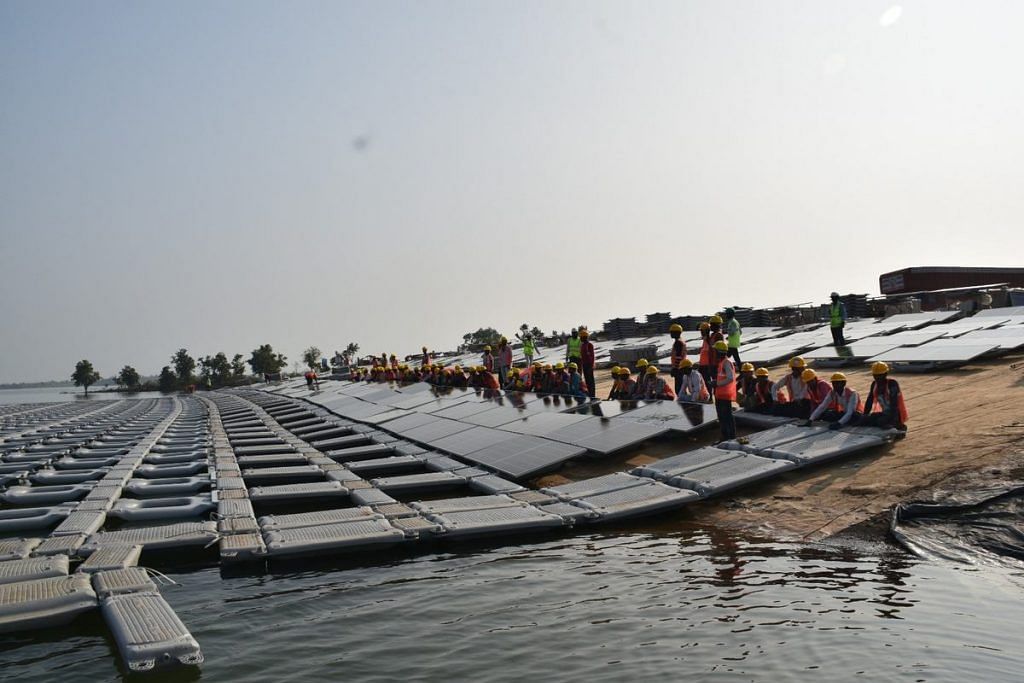
In the water, two motor boats tied to the array drag it to the middle of the dam where Yadav and his team of divers have successfully placed nearly 98 dead-weight anchors on the river bed.
“Once the array of solar panels reaches the site, the moorings along its edges will be tied to the dead-weights, preventing it from floating freely into the dam,” explained Deepak Deshle, the supervisor overseeing the work on the barge. Around 14 such arrays are being set up in one block, which together will generate 100MW of electricity.
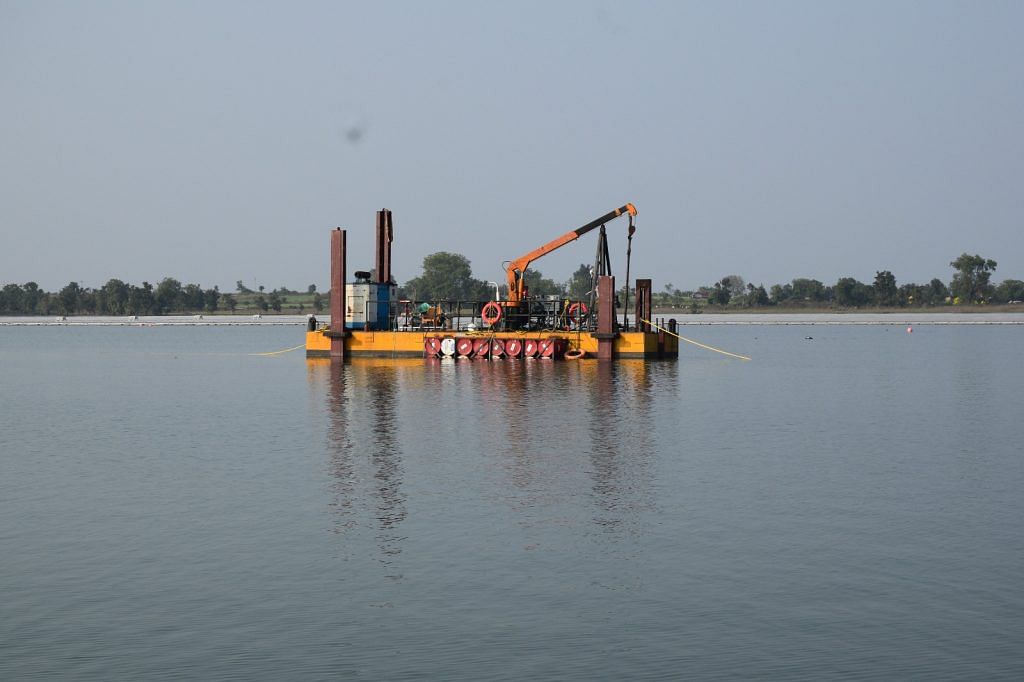
With land being a scarce, contested, and expensive commodity, floating power stations could be the answer to the often expensive and long-drawn-out acquisition process.
Madhya Pradesh, the second largest state in India after Rajasthan, was given a target to generate 12GW through renewable sources by 2022. So far, it has managed to generate only around 5.5GW. The government commissioned two solar parks at Rewa (750MW), which supplies power to Delhi Metro, and Mandsaur (250MW). But five other ground-mounted solar projects are still in the pipeline.
“Projects like the 950MW solar power park at Chhatarpur district was a non-starter after the authorities realised that forest land had been demarcated for it. The project was eventually dropped,” said a senior government official who did not want to be named.
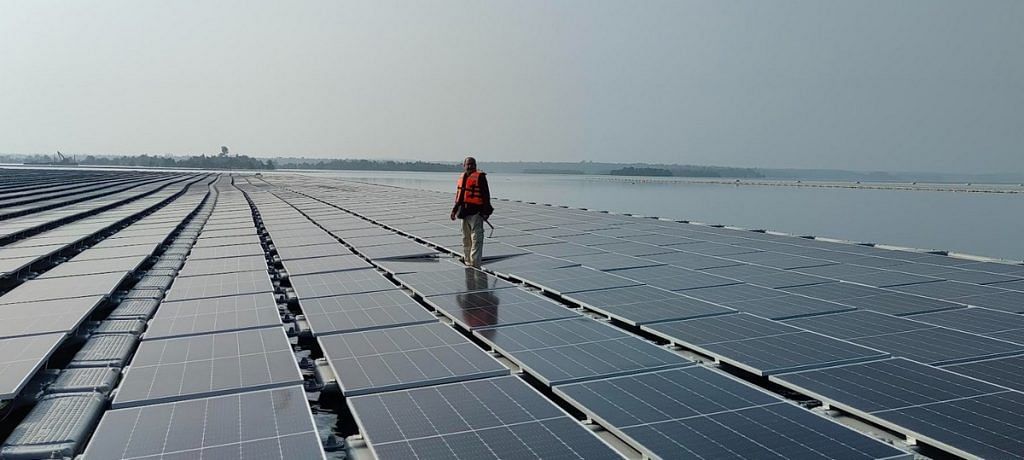
To meet its renewable energy generating target, the Madhya Pradesh government turned to the Narmada River back in 2019. Omkareshwar Dam is flanked by Bargi Dam to its east and Indra-Sagar Dam in the west. This allows the authorities to maintain the water level at all times, a crucial determining factor for the success of any floating solar power project.
“It was chosen as the water level could be maintained at a depth of 193-196 metres,” said Uma Shankar, site-in-charge for AMP Energy India, one of the three private companies that were awarded tenders for the first phase of the project.
The commissioned floating solar park capacity in India is not even 200MW today. Once you have momentum and there is 1GW installed, and it is working well, only then can we say that this technology can be scaled up.”
-Saptak Ghosh, renewable energy policy expert, CSTEP
But years of careful planning threatened to go awry in September last year, when heavy rains washed away nearly half the floating platform.
“As a result, work was delayed by several months,” said Shankar as he inspected the now rebuilt platform in the middle of the dam. He’s worked on six floating solar power projects in India including Telangana’s Ramagundam.
Though it was the best location, building a floating energy plant at Omkareshwar was more challenging than the one set up in Ramagundam reservoir, which is human-made with no marine life or water-level fluctuations. The site at the Ramagundam project also had peripheral infrastructure, such as roads leading to the site, explained Shankar. For the Omkareshwar plant, at least 20 km of roads had to be constructed just to reach the work sites at four different locations in the dam.
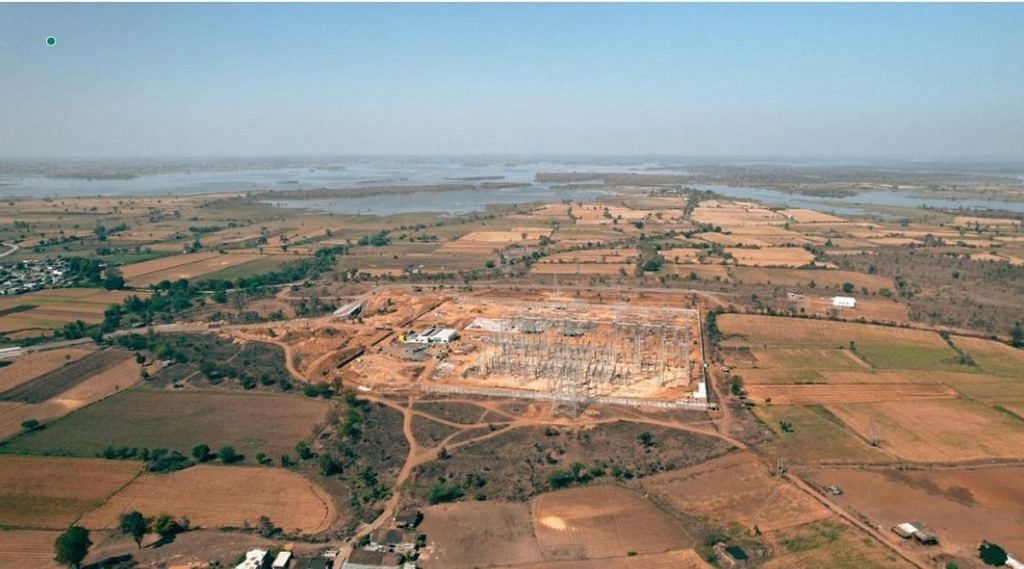
At almost every step, there were reminders of the protests against the dam itself which had affected over 30 villages and 8,000 families in the district. In 2015, farmers had launched a Jal Satyagraha after the government raised the water level of Omkareshwar Dam from 189 metres to 191 metres. Even now, workers find signs of submerged villages in the bed of the dam—from light poles to trees.
“It typically takes over a day to cut down one tree at the bed of the dam,” said Lawrence Dhanraju, site-incharge overseeing the work for SJVN, another company that was awarded a tender for the first phase.
Transmission towers now rise from the green fields over the 50 km route from Omkareshwar to Saktapur. They will carry the power generated to two substations 10 km away before it’s absorbed into the state grid.
Scaling floating solar
At IIT-Roorkee, Professor Anil Kumar, a specialist in floating solar farms, has been monitoring the project closely. He is excited by the prospect of seeing the technology being scaled to such a grand level. It will open new areas of study.
“When it comes to the floating solar power projects executed in India so far, most of them are done by NTPC in their own water tanks, which have a substation next to them. Hence it is difficult to compare them with the one being built in MP,” he said.
On paper, floating solar energy farms are almost serendipitous in their simplicity. Panels are attached on anchored rafts (or arrays) and float on water instead of land. The panels act as a lid, reducing evaporation while the water keeps them cool, allowing them to generate more electricity than land farms. However, floating solar plants are about 20 per cent more expensive than ground-mounted solar plants, according to officials.
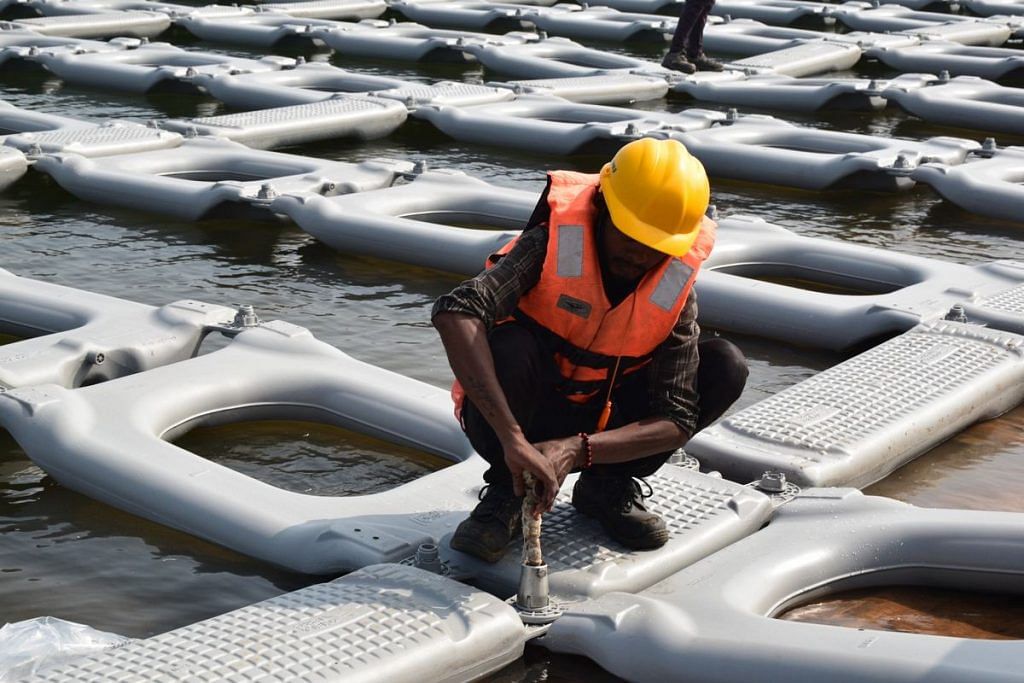
“The limited application of floating solar is also because its cost is higher than the ground-mounted ones. Besides, any technology gets a boost with enabling policies, but so far, the government has been uncertain over its application and impact,” said Kumar.
Solar modules are currently being imported from Vietnam and a factory to manufacture floats has been set up in Indore. But what drives up the costs of floating solar projects is the varying depth of the dam and consequent mooring length. In November 2022, AMP Energy, SJVN, and another energy company NHDC quoted Rs 3.21, Rs 3.22 and Rs 3.26 per unit as the production cost of the energy. But the bidding for the second phase had to be cancelled since the prices quoted by the companies were proving to be too costly.
A challenge for such projects is the limited industry players in this domain, pointed out Saptak Ghosh, a renewable energy policy expert from CSTEP.
“The commissioned floating solar park capacity in India is not even 200MW today,” he said. “Once you have momentum and there is 1GW installed, and it is working well, only then can we say that this technology can be scaled up.”
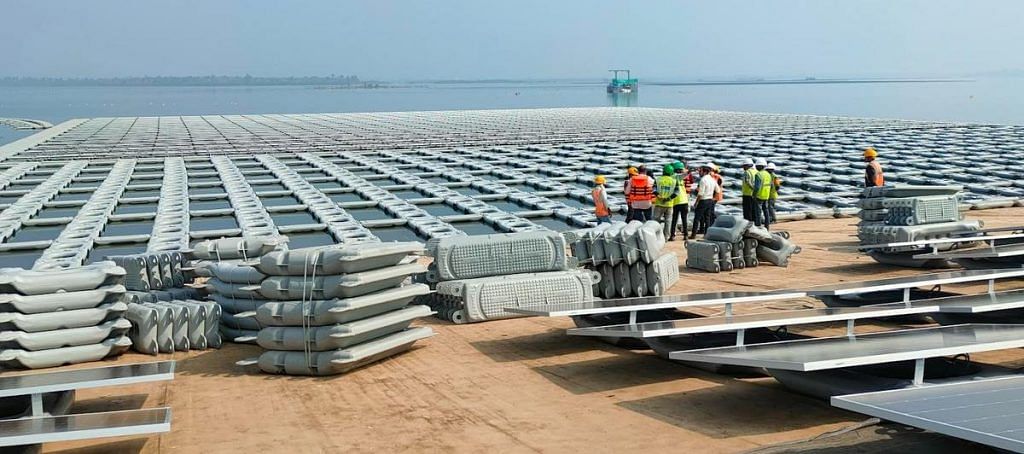
Also Read: India’s solar waste to fill 720 Olympic-sized pools by 2030 — CEEW study calls for robust recycling
Clean energy, dark waters
Not everyone is celebrating the project’s potential. Ecologists are concerned about its impact on underwater life—the panels will cover more than 6 sq km of water, preventing the sun’s rays from reaching the river bed. This can disrupt the aquatic ecosystem that thrives under optimum temperature.
Covering a water body’s surface area up to a limit of 40 per cent minimises the impact on underwater ecology, according to Sandeep Thakre, associate fellow at The Energy and Resource Institute (TERI). “This is taken into account during the feasibility studies done prior to the commencement of the project. Another aspect is ensuring the placement of arrays and solar modules allows sunlight to enter the water,” he said.
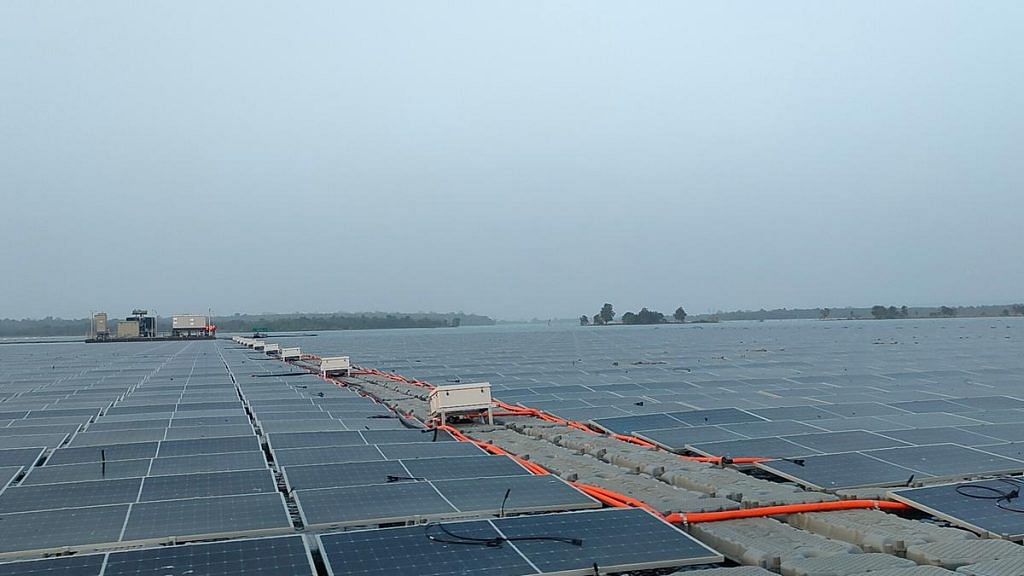
However, Thakre acknowledges that the impact of such projects on the water’s ecology is usually only ascertained after 5-10 years. “Another aspect to monitor is the quality of plastic and metals used in the solar panels to ensure they do not further damage the water’s ecology. For this, there needs to be regular monitoring every two years,” he added.
To assess the project’s impact, IIT-Bombay plans to set up a lab to monitor and study the changes in the water’s ecology over a sustained period of time.
“We want to see if there is any contamination in the water body, or if the project will lead to any toxicity because heavy metals are being set up on such a large scale,” said Professor Haripriya Gundimedia from IIT-Bombay. “In Singapore, they are working to develop solar farms over the oceans. This will definitely be a breakthrough. But at this point of time, there is very little research available presently on the project and frankly we do not know its full impact.”
It’s not just the dam and the river that have been transformed. Transmission towers now rise from the green fields over the 50 km route from Omkareshwar to Saktapur. They will carry the power generated to two substations 10 km away before it’s finally absorbed into the state grid.
How the power from the Omkareshwar park will be utilised is still being discussed, but if solar energy can power the Delhi Metro, then why not in Madhya Pradesh? Indore’s first metro line started operations this year, and Bhopal is expected to follow suit in June this year.
“One day, energy from Omkareshwar solar park will be used to power these metro trains as well,” said an official from state’s energy department.


